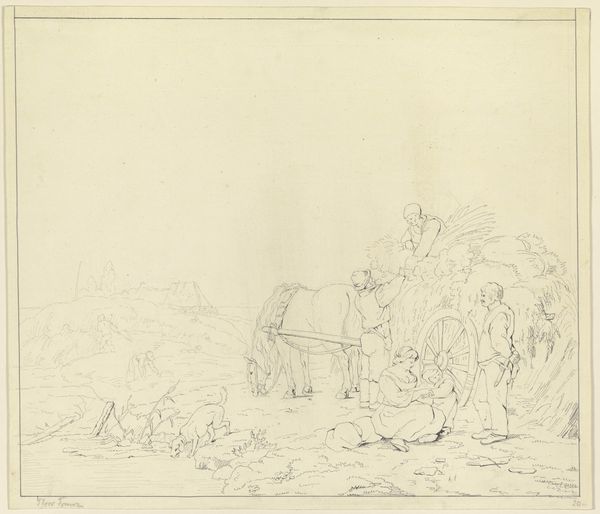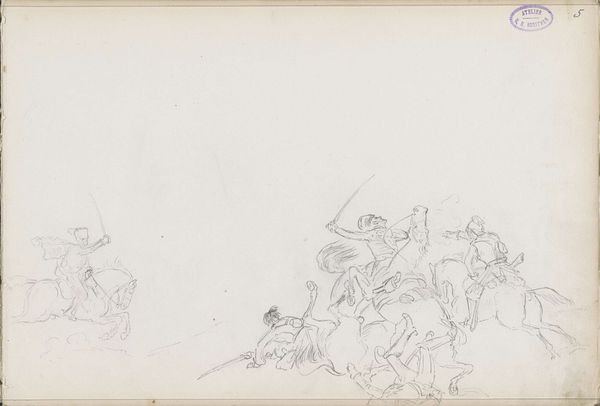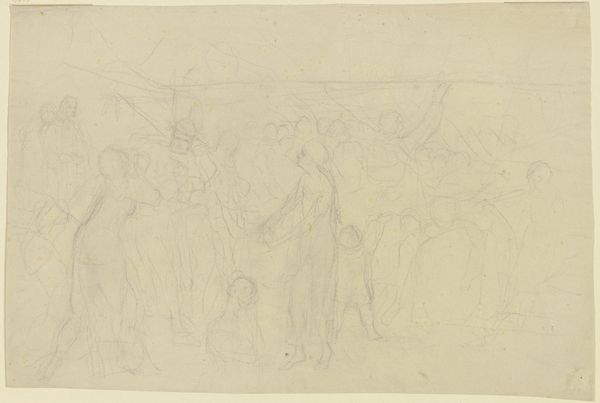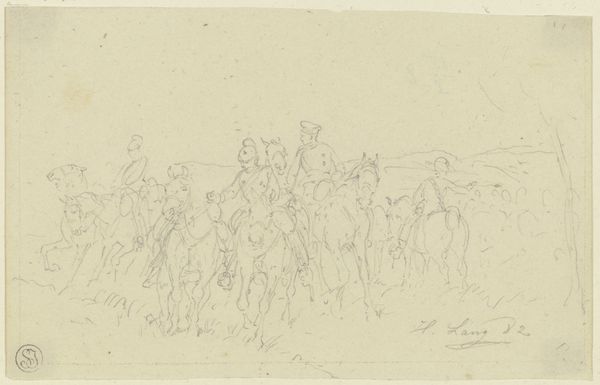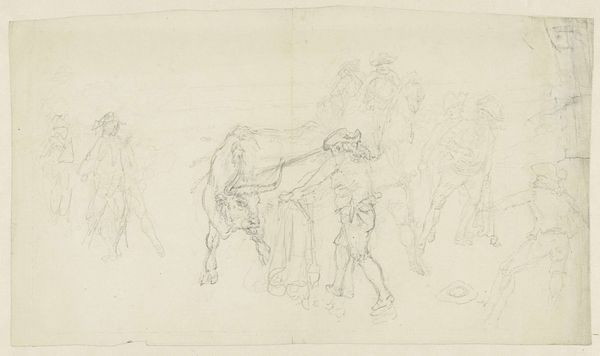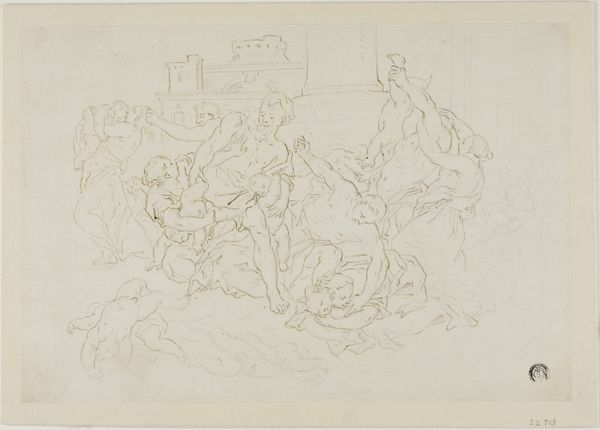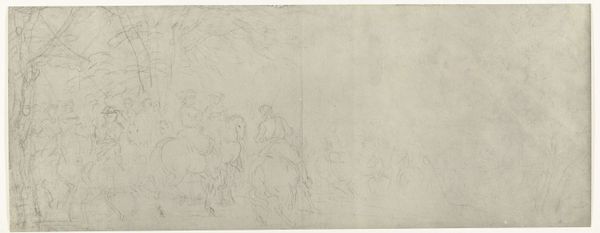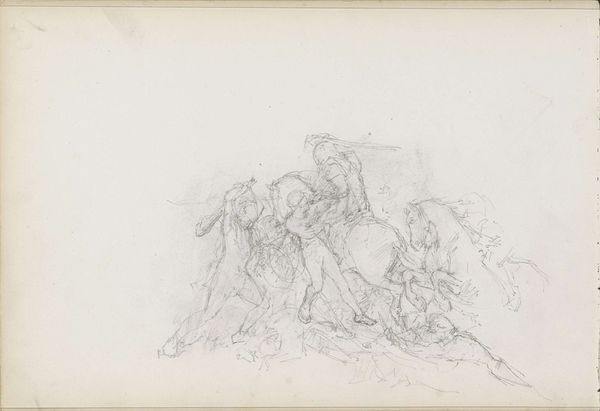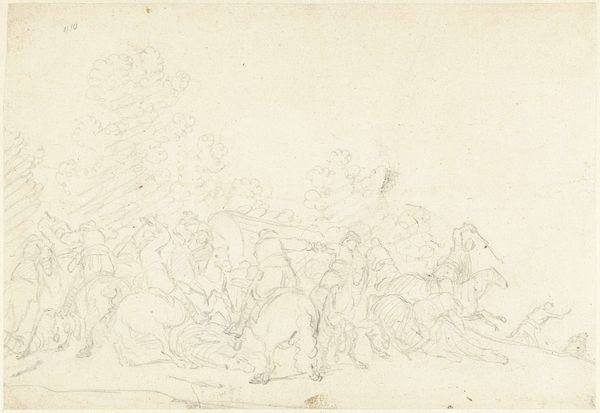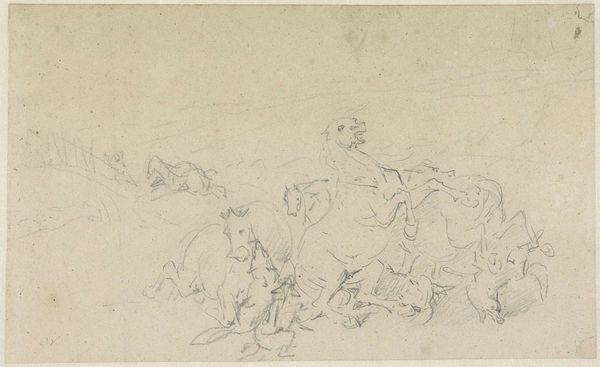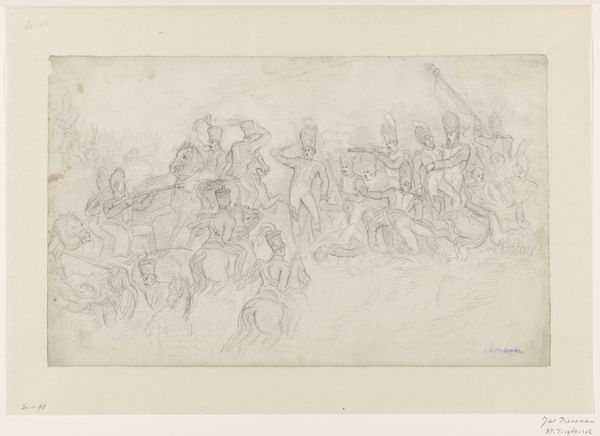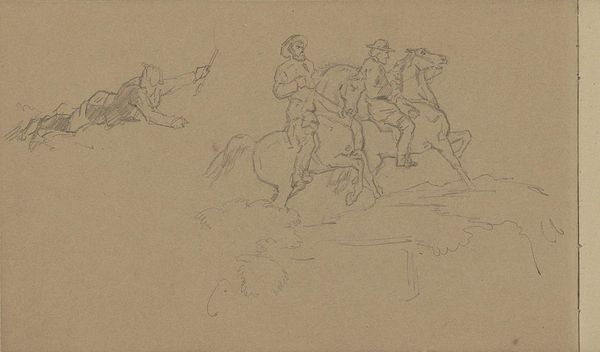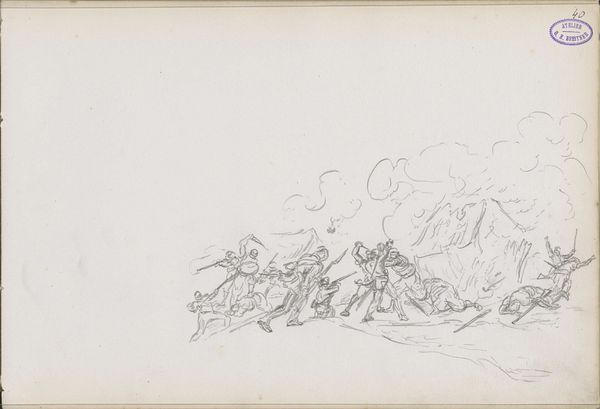
drawing, pencil
#
drawing
#
pencil sketch
#
landscape
#
figuration
#
romanticism
#
pencil
#
horse
Dimensions: height 150 mm, width 225 mm
Copyright: Rijks Museum: Open Domain
Curator: This drawing, Riders Letting Their Horses Drink, by Eugène Delacroix, likely dates from between 1808 and 1863. It's done in pencil on paper and currently resides here at the Rijksmuseum. Editor: It feels unfinished, but captivating nonetheless. The ethereal quality of the pencil work lends the whole scene an air of transient calm, as though this moment of repose is fleeting. Curator: Delacroix's Romantic leanings are visible. We might examine the composition within the wider context of orientalism during the period; looking at how Delacroix represented ideas of power, exoticism, and the 'other'. Do you notice how gender dynamics play out in representing figures and animals? Who holds power in this scene and why? Editor: Semiotically, the repetition of circular forms, in the horses' bodies and the riders' postures, creates a cohesive visual language. It really underscores this theme of cyclical movement, reflecting life’s rhythms and even suggesting a kind of natural harmony between man and animal. Curator: But that harmony, as you say, must also be placed alongside an understanding of how these representations could play into imperial narratives. Think about it; what does it mean for Delacroix, a European artist, to depict these "exotic" scenes and how did such images shape perceptions back home? How does Delacroix navigate between a kind of empathetic representation and potentially reinforcing othering gazes? Editor: True, but consider his artistic process too. The very sketch-like quality emphasizes movement, and that allows Delacroix to highlight dynamism, which itself suggests that what matters isn’t exactness but energy—visual energy which moves right off the page. Curator: And that energy then reflects back upon societal considerations; power structures represented, perceived cultural value placed upon each figure depicted, or the simple, complex matter of identity. Even in what you call the dynamism—we can begin to discuss representation in terms of who moves, who is still, who acts, who observes... Editor: An approach like yours invites deeper discussion and gives broader critical worth to Delacroix's work. Curator: Yes, thinking this way transforms our view—illuminating social discourse from simply what one sees.
Comments
No comments
Be the first to comment and join the conversation on the ultimate creative platform.

